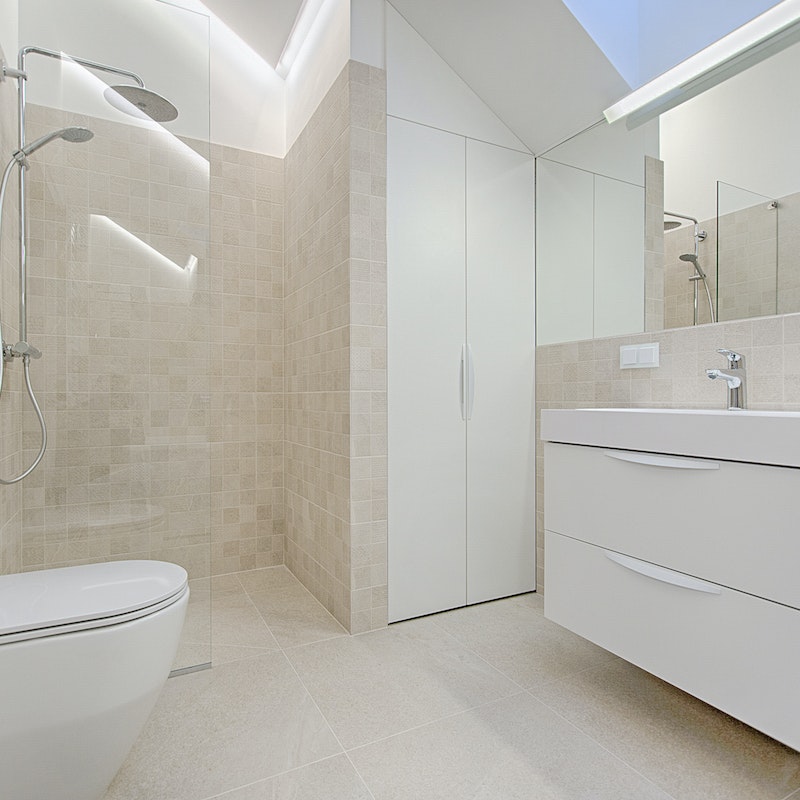Can a Toilet and Shower Share the Same Drain?
Plumbing is one of those often overlooked marvels of modern living, and it’s only when we face a problem or have to make a decision about our systems that we really dive into its intricacies. One common conundrum homeowners frequently encounter revolves around drainage systems, and in particular, whether or not a toilet and a shower can share the same drain – without impacting your home’s plumbing functionality. The short answer? Yes – but let’s explore the benefits, drawbacks, and considerations of different drainage configurations.
Drainage Systems Overview
Every home in the UK has an intricate drainage system that manages waste and water from various fixtures, such as sinks, showers, and toilets. As you likely already guessed, the primary purpose of these systems is to safely transport waste and used water away from the home, ensuring the cleanliness and hygiene of your living space.
While all drainage systems serve this general purpose, the specific design and configuration of each one can vary considerably. So, can a toilet and shower share the same drain? Yes – but it’s a little more complicated than that.
Separate vs. Combined Drainage Systems for Toilets and Showers
Traditionally, many homes have separate drainage systems for different fixtures: in this setup, toilets have their own dedicated drain line while showers, sinks, and bathtubs might share another. The reason for this segregation tends to be the nature and volume of waste each fixture generates; toilets, for instance, discharge solid waste, which requires a wider pipe diameter (usually 100mm in the UK) to prevent blockages.
Showers, on the other hand, discharge liquid waste and thus can function efficiently with narrower pipes. However, modern plumbing innovations and design considerations have led to the emergence of combined drainage systems, where a toilet and shower can indeed share the same drain. When planned correctly, this combined system can effectively handle the waste from both fixtures without issue.
Also Read: Water Pipes Banging at Night: Causes and Solutions
Advantages of a Combined Drainage System
Space Advantage
Particularly in homes or buildings with limited space, a combined system can reduce the amount of piping required, and this can also be beneficial for buildings with complex structures where laying separate pipes might be challenging.
Cost-effective
Merging the drainage can result in a reduction in installation costs, as there are fewer pipes and fittings required. If you’re on a budget, this might be the best option for you.
Simplified maintenance
Withba shared drain, there’s one less separate system to worry about; this can make it easier for professionals, like our trusted drain unblockers in London, to service and maintain your system.
Disadvantages of a Combined Drainage System
Potential for blockages
While modern combined systems are designed efficiently, there’s always a risk of blockages if not maintained properly. Since both the toilet and shower waste are flowing through the same pipe, any solid waste from the toilet could potentially catch hair or other debris from the shower, leading to clogs.
Complex Installation
Although the end result might seem simpler, the installation of a combined system might require an expert touch. Proper grading, venting, and trap placement become even more crucial to ensure both fixtures drain correctly without causing backups or slow drainage.
Limitation on simultaneous use
Especially in drain systems that aren’t optimally designed, using the shower and toilet simultaneously might cause slow drainage in one or both fixtures.
With these factors in mind, any homeowner should always carefully consider the pros and cons before deciding on a drainage system. And don’t forget – whether you’re more swayed to opt for a separate or combined system, always consult with a professional to ensure your home’s drainage is going to be efficient and effective.
Key Takeaways
Ultimately, making the decision between a separate or combined drainage system isn’t black and white: what might work best for one household might not be the most suitable choice for another, so it’s important to consider the specifics of your home. The nature of your home, your family’s usage habits, and the specific constraints of your property can all influence the ideal choice.
While combined systems offer the benefits of space-saving and potentially reduced costs, they also come with their own set of challenges, but as with any plumbing project, the key is in the details. Proper installation, regular maintenance, and ensuring the system is tailored to your needs can alleviate many of the potential issues.
Is it more expensive to retrofit a combined drainage system in an older home?
Generally, retrofitting a combined system in an older home can be more expensive and complex than installing it in a new build, due to the need to adapt the existing plumbing infrastructure. However, the exact costs can vary based on the specifics of the property.
How often should I get my combined drainage system cleaned or maintained?
It’s advisable to have a professional inspect and clean your drainage system at least once a year. Regular maintenance can help prevent potential blockages and ensure the system operates efficiently.
Can I use regular drain cleaners for a combined system?
While some drain cleaners might be effective, it’s always best to consult with a professional before using chemical solutions. Some cleaners can be corrosive and might damage your pipes or negatively impact the environment. Opting for natural solutions or professional cleaning services can be safer and more effective in the long run.
What should I do if my combined system starts draining slowly?
Slow drainage can be a sign of a blockage or an issue with the system’s design. It’s essential to address this promptly to prevent further problems, so contact a plumber for an evaluation.

